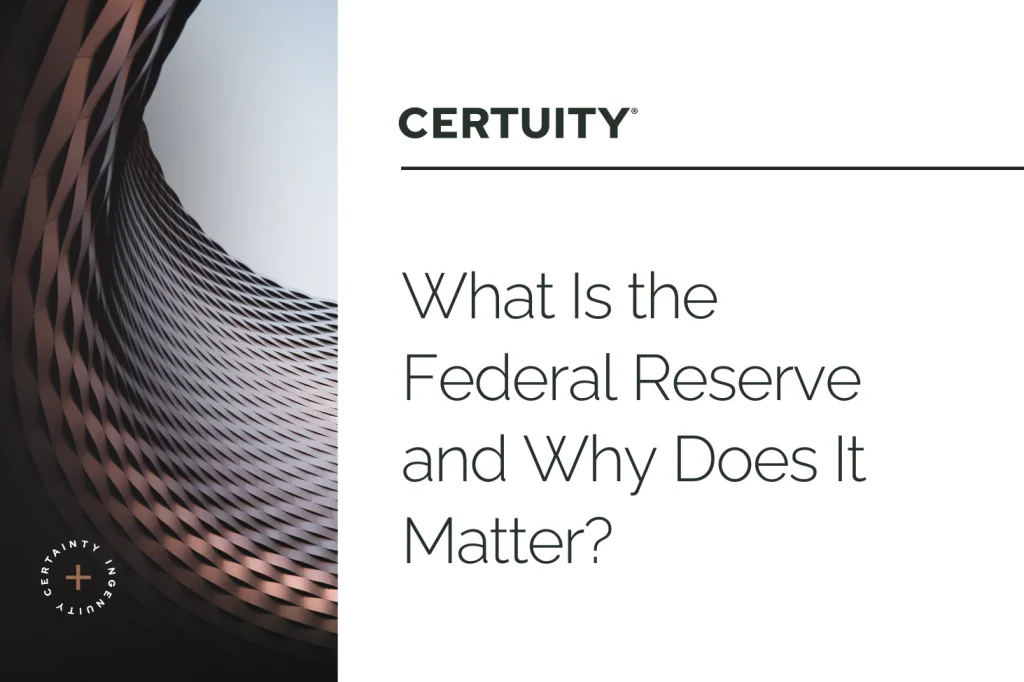
Key Takeaways
- The Federal Reserve, often called “the Fed,” is the central bank of the United States. Its primary goals include managing inflation, maximizing employment, and ensuring financial system stability.
- The Fed’s structure mixes national oversight with regional input. It includes a central board, twelve regional banks, and a committee that sets policy.
- The Fed leverages a wide range of tools, like interest rates, and oversight mechanisms, like supervising banks, to keep the economy functioning smoothly. Its actions impact everything from mortgage rates to job growth to market swings.
- The Fed is independent by design. It’s insulated from political pressure in order to make decisions with a long-term view of the economy.
The Federal Reserve has been making headlines as it navigates a shifting economic landscape marked by stubborn inflation, rising interest rates, and political scrutiny. As markets respond to global instability, investors are watching the Fed’s next moves closely.
This article breaks down what the Federal Reserve is, how it works, and why it plays such a critical role in the U.S. economy. From interest rate policy to its independence from political influence, we’ll explore the key functions of the Fed and why its actions matter more than ever today.
What Is the Federal Reserve?
The Federal Reserve, often called “the Fed,” is the central bank of the United States. It was created to provide the nation with a safer, more flexible, and more stable monetary and financial system. Its primary goals include managing inflation, maximizing employment, and ensuring financial system stability.
Before the Fed, the U.S. had no central authority to step in during financial crises. When a financial panic erupted in 1907, people rushed to pull money out of banks, nearly collapsing the system. Wealthy bankers like J.P. Morgan stepped in to help—but it was clear the country needed a more reliable solution. In 1913, Congress created the Federal Reserve to make the financial system more stable and better able to handle shocks.
Federal Reserve Structure
The Fed is different from most central banks because it blends centralized decision-making with regional input. Its structure includes:
- Board of Governors: The Board is composed of seven members based in Washington, D.C. They’re nominated by the President and approved by the Senate. They serve long, 14-year terms to remain removed from political pressure.
- 12 Regional Reserve Banks: These banks are spread across cities like New York, Chicago, and San Francisco. They gather economic data, oversee banks in their area, and support the local economy.
- Federal Open Market Committee (FOMC): This group makes decisions about interest rates and monetary policy. It includes the governors, the president of the New York Fed, and a rotating group of four other Reserve Bank presidents.
Federal Reserve Responsibilities
The Fed’s responsibilities span everything from managing inflation to ensuring that payments are processed safely and efficiently. It uses a wide range of tools and oversight mechanisms to keep the economy functioning smoothly.
- Monetary Policy: The Fed adjusts interest rates and buys and sells assets to keep inflation in check, support job growth, and maintain stable prices. For example, during the COVID-19 pandemic, it slashed rates and pumped money into the financial system to keep things moving.
- Bank Oversight: It supervises large financial institutions, runs stress tests to check their health, and sets capital rules to help avoid economic calamities like the Great Recession of 2008.
- Financial Stability: In times of crisis, the Fed acts as a “lender of last resort,” providing emergency support to keep the system from seizing up.
- Payment System Support: The Fed helps handle routine things like check clearing, electronic payments, and wire transfers—quietly making sure money moves where it needs to.
- Banker to the Government: It manages the U.S. Treasury’s accounts, helps issue debt, and handles some currency and foreign exchange operations.
Why the Fed Operates Independently
The Fed is accountable to Congress but makes policy decisions without direct interference from the President or lawmakers. That independence is by design—it allows the Fed to take a long-term view of the economy, even if its moves are unpopular in the short term. For example, raising interest rates might slow inflation but also risk higher unemployment or slower growth.
This autonomy helps the Fed make tough decisions without short-term political influence, particularly during election seasons or economic downturns. However, recent remarks by President Trump, urging immediate rate cuts by Fed Chair Jerome Powell, have intensified concerns about the central bank’s independence. These comments have contributed to market volatility and prompted calls in Congress to reinforce the Fed’s autonomy and shield it from political pressures.
Summary: Why the Fed Matters
In today’s complex global economy, understanding the Fed’s role is essential for anyone navigating financial markets and household finances.
The Fed plays a powerful role in shaping interest rates, job markets, and everyday costs—from mortgages to groceries. While debates about its power continue, its influence remains undeniable. With global economic uncertainty and persistent inflation, the Fed faces the challenge of maintaining its credibility. In the near future, it will likely focus on defending its independence, making tough rate decisions, and ensuring stability amid market unpredictability.